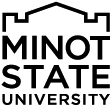Course Components
The following course content page standards must be maintained to meet student needs and program standards:
- Faculty will provide a short, concise description on how to start each course and incorporate the statement in the content frame of their course.
- Each course content page will include a course schedule/plan
- Each course content page will include an instructor bio
- Each course will include the Student Help and Resources module on the course content page.
- The approved campus copyright statement will be displayed as the last “item” in the initial course content page.
- This course is protected by copyright law as established in Title 17 of the U.S. Code. No individual or entity is permitted to copy, publish, or commercially use any portion of this site without express written permission of the author. If you would like more information about the copyrighted information used in this course, please contact online@minotstateu.edu
Instructors should send a welcome message to their online students the first day of the semester or session. By welcoming students to class, the instructors begin the semester on a positive note. It sets the stage for instructor presence in the course. This means, “I am here and ready to teach, guide, and facilitate the course.” It is also marks the initial steps in the formation of the course’s online community, which must be a safe, secure, and trusting environment for student success.
The message can direct students to the syllabus, calendar, and other important course elements that require emphasis, such as technical requirements or instructor expectations. Many instructors use the welcome message to explain the importance of the online community in their course and expectations for its use and student involvement. It can also be used to outline the course, the importance of the syllabus, as well as an introduction to your online teaching philosophy and if you wish, your personality. It can be text-based, audio, or even video. We recommend use of the Announcement tool or as an alternative the Discussions tool.
The course home page should contain a short bio covering the instructor’s educational background and experience in their field. A photograph is optional; however, at a minimum, an avatar is recommended.
It is recommended that online courses have a student and instructor introduction assignment using the discussion board, Collaborate, or Yuja. An introduction assignment provides students the opportunity to talk about themselves and learn about their classmates. It also helps address feelings of isolation in the online environment.
Faculty can use this discussion to set the stage and try to connect students to the course content, its relevance, and course outcomes. It can also help create professional relationships and connections that can be used later to create effective groups, define leaders and followers, specific expertise, etc.
Note: Keep in mind FERPA guidelines when developing your course introduction assignment.
One of the most important factors in online student success is the instructor’s presence and accessibility. Knowing the instructor is present provides a natural motivation and sense of student confidence. If possible, let students know when you plan to access the course. For example, will you work evenings or on weekends? Online office hours are also critical. MSU our online instructors to check their online courses for student activity and interaction at least daily, but when necessary, not to exceed a 48-hour period.
When using technologies other than Blackboard tools, it is important to include adequate instructions on the use and support of these technologies. This is critical to student success. It greatly reduces frustration during the course. Technologies include (but are not inclusive): SafeAssign, Respondus Lockdown Browser, Class Collaborate, Yuja, Teams, and VoiceThread. The Office of Instructional Technology has boiler plate instructions for most online tools.
Faculty must ensure they include the following attributes in all online syllabuses.
It is recommended that instructors prepare lecture sharing their individual expertise using a variety of formats, unless they are narrated. Lecture should be “chunked” for the online environment, connected to other course materials and/or the World Wide Web, course tools, and address course and unit learning objectives. Departments will be the review authority for content during the Beta Test process.
Instructors have the ability to release assessment grades in relation to test dates; however, all grades, when released, must be visible in the student’s grade book. Should grading activities occur outside the course shell, for instance in publisher-based test tools or a field trip, a column for grading these events must be created and be visible to the students.
Every course should have a schedule of events and assessments either created using the Blackboard Tool or separately uploaded document. This information helps students stay on task while progressing through the course.
Online courses must use the MSU approved “last page of course” in the content path or as an attachment to the syllabus. The document outlines course evaluations, procedures on how to access student grades, and transcript information. Again, this page is designed to save the instructor work and provide the student information for accessing for grades and course evaluations.
Faculty can add a Class Climate dashboard within their Blackboard shell. This dashboard gives the student links to all evaluations that open at the time. It also provides the instructor a list of evaluations that are currently open and their response rate.




